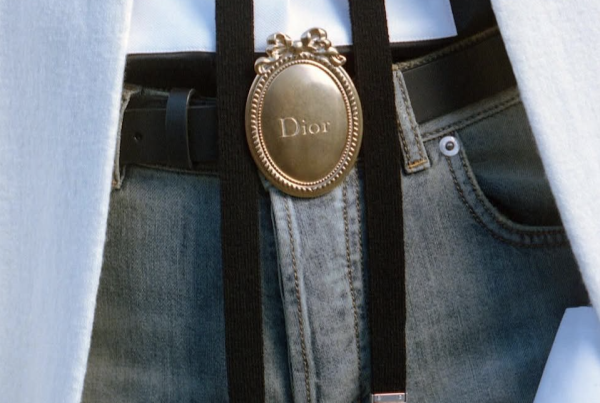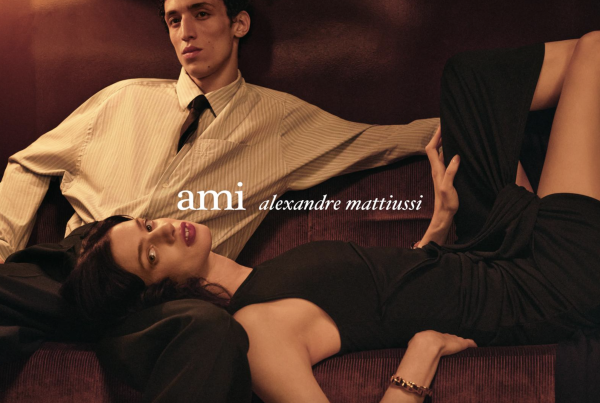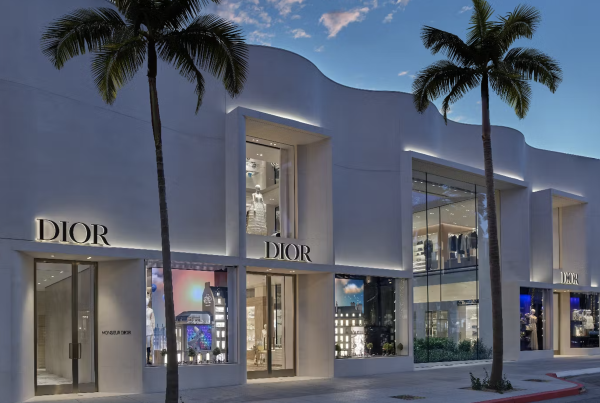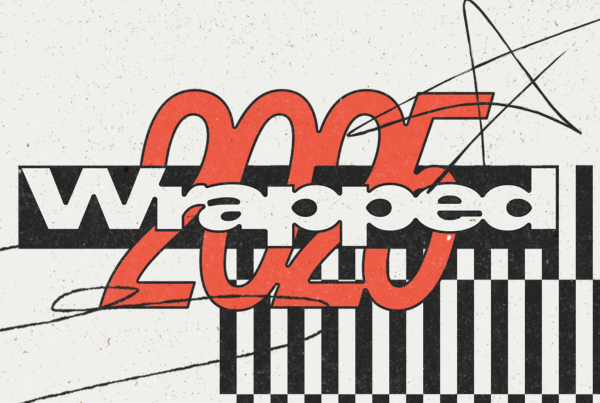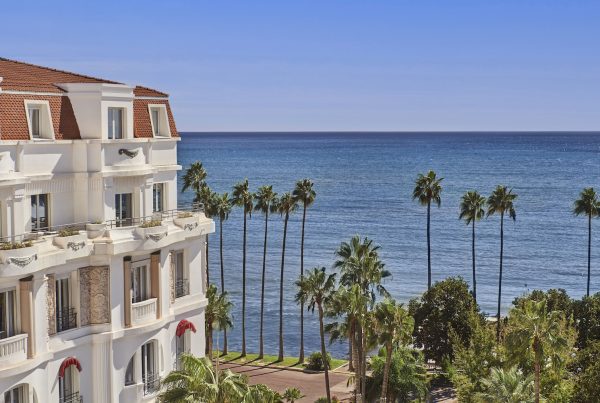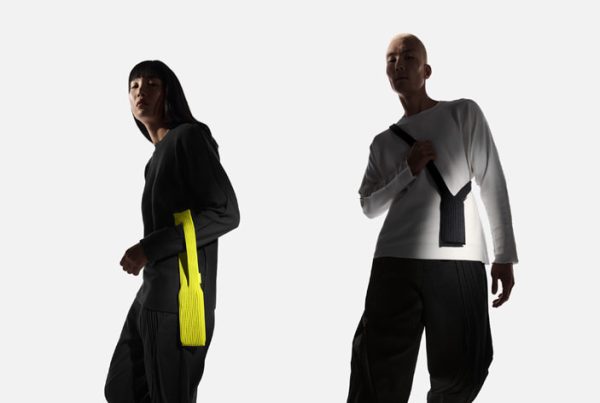Creatives in practice:
Shaquille-Aaron Keith
“the background of the painting is like the beat; it’s the instrumental”
Living in service to his passion Visual artist, Shaquille-Aaron Keith mentions later in this interview that his self-funded exhibition was not hosted for financial gain, instead, it was to tell stories that can be learned about, as well as resonated with. “The idea of selling work is a lot more glamourous than it is… it can hurt in ways you didn’t think it would. At the end of the day, people want to put a price on your life, and how much is your life worth?”.
Keith’s pallette is very colourful, much like his experiences which bled from canvas to canvas… The vein that runs through this body of work is forever flowing conveys such honesty, which is something men aren’t always seen to be, so to have a room filled with evocative artwork that speaks to melanin filled individuals, is yet a learning experience to those who lack such provides an olive branch from both tree’s which in essence share the same initial branch.
No matter if you’re swinging from vine to vine, scathed or unscathed, experiences can be sympathised with, that’s something I’ve learned from the medium carefully expressed by Keith.
Photography & Interview: Rhys Marcus Jay | @rhysmarcusjay

This is your debut exhibition, no?
Yeah, this is my debut exhibition. I’ve never even thrown a birthday party before, so this is my first time putting together anything. I’m just glad that people found the time to come.
How did this happen? Why South Kensington? How did you get the space?
Okay cool, so the gallery that I work with, Campbells, my uncle actually runs it… but his whole clientele is a whole different world. And obviously who I work with is a whole different world. We’re family so I was like, “Yo, let’s work together”, and the space I had to pay for, came out of my own pocket… there was no freebie there. I had to pay for it myself.
I hope you don’t mind me asking, but what kind of ballpark is it… what kind of cost?
GRANDS! (laughs)
That’s enough for me to chew on!
It cost grands bro, but I use the money that I made from other avenues that I work in to pay for that, because obviously, I don’t make money from my artwork… I do art as a passion. I don’t put a monetary value on my feelings, and that’s on my canvases.
And what are your other streams of revenue? Just for inspiration for those that will be reading.
So yeah, sometimes I do collaborations with brands and earlier on in my career, I guess not so much now, I did Instagram sh*t of getting paid to promote brands and products. Now, as my career has moved on and people start to recognise what I do like I’ve been paid to write poetry for Gucci Beauty, paid to do poetry for Bentley on World Poetry Day. I really got to the bag with Toblerone, I did a collaboration with them for Valentine’s Day and wrote five poems for them. Even doing a commission that I exhibited here for Diesel, now I feel like now I get my money from collaborating and doing the commercial work, but I don’t bring in the integral values of my work into the commercial side. I feel like once I do that, there’s no distinction between the integral side and the commercial side. When I put up these works here it’s like you’re looking at pop art as opposed to integral feelings and intuitive motions and all of that other stuff. It’s all about how I choose to openly navigate. I was just talking to my uncle and he was just saying “How many paintings do you have?”, because he helps me do my prints, and at the time I think I had about ten. He said that if I did a few more then I would have a good show, so I just kept painting and I said to him “Do you know what? I think it’s time.” It’s a dream to work with him because when I was like 16 years old and I wanted to get a job, I wanted to work at his framing gallery for so long, but I called him as he was like “Yeah, send me your CV.” I sent my CV and never got the job, but it’s calm because, you know, 8 years later or something like that I’m working with him on some art stuff and he put me into contact with the people that own the space. They saw my work and they really liked it, and they said, “This is how much it will be”, and they actually gave it to me at a little bit of a discount because they liked my work and stuff… they really wanted me to use the space. I ended up paying out of my own pocket and they gave me the space for about nine days or ten days, and then allowed me to do an extension because they saw the number of people coming through. It was good for them and it was good for me, so they allowed me to have one more extra day as well.
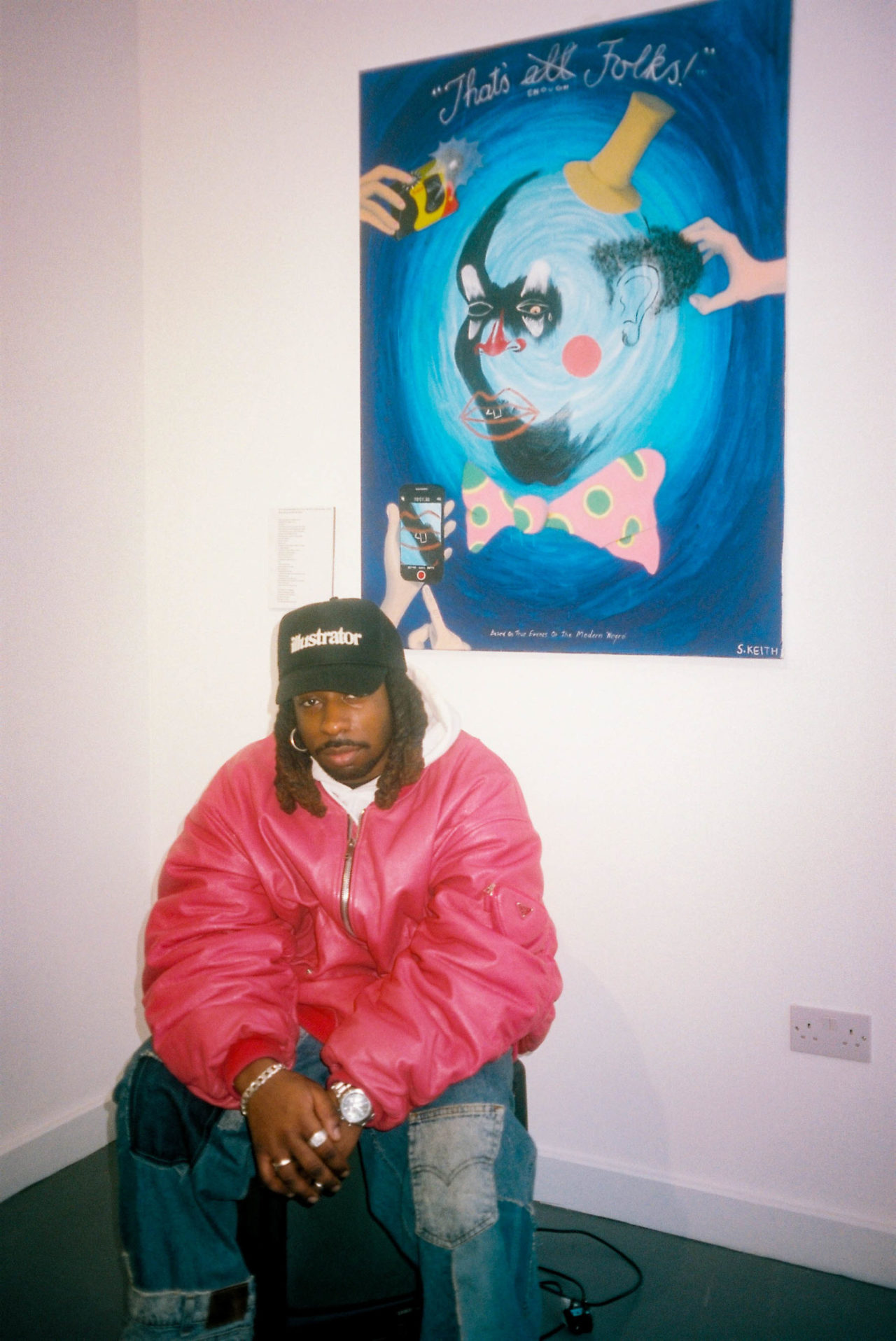
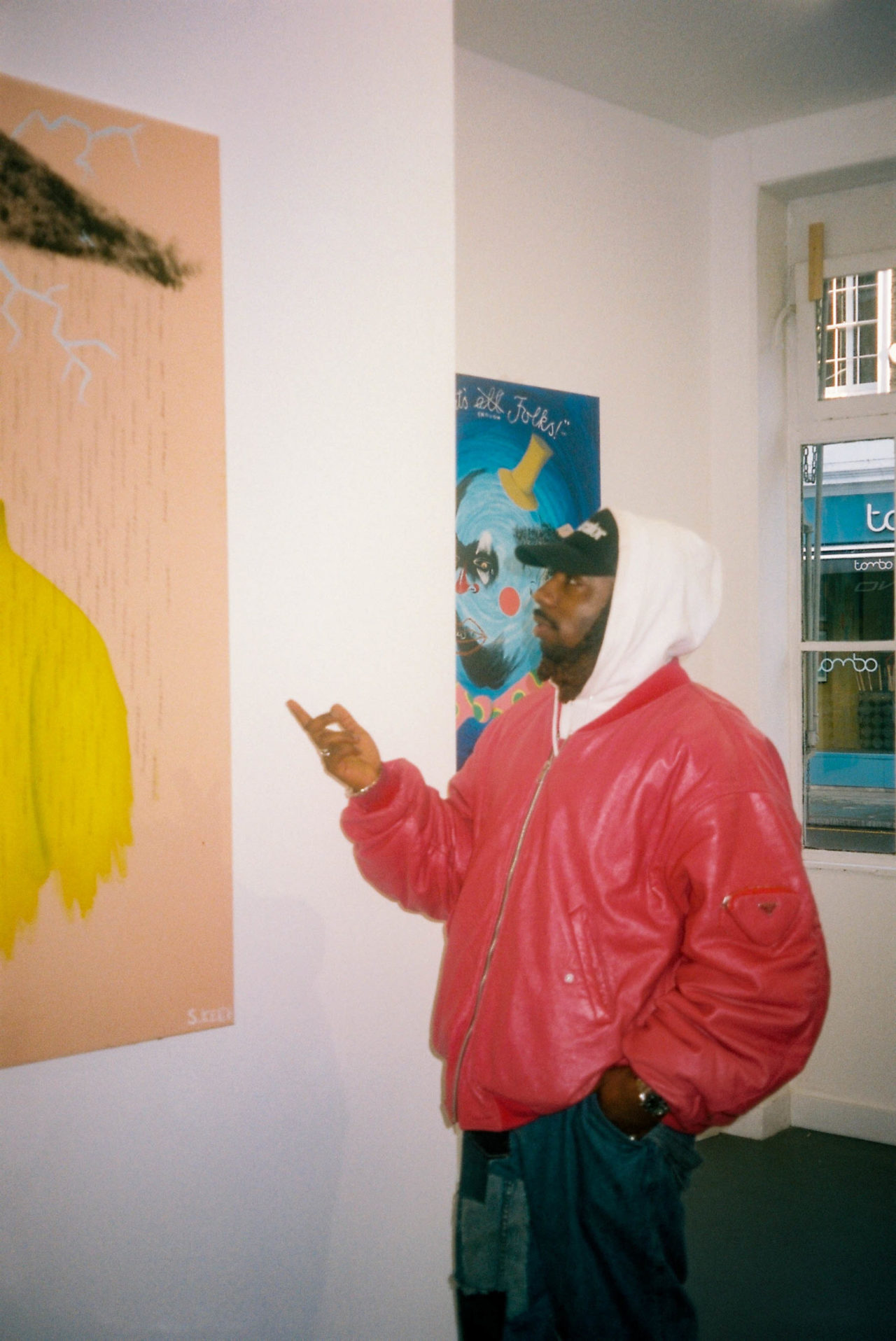
Alright… how do I frame this one? Can you talk to me about how a melanin-filled individual like yourself has come to occupy this gallery space? What inspired you to choose this location?
Okay, so… other than it being enough space for the size of the canvases and the luxury of being able to work closely with my uncle because the beautiful thing is, the gallery that I work with is black-owned… the gallery is also in South Kensington. It’s a family affair thing, it’s not like I breaded someone in the industry or something like that. And my uncle, even if I am family, wouldn’t let me work with him unless he thought my work was good too because he’s a man of class. The people he does framing for are like, The Royal Family… you know, he does stuff with The Royal Family in Saudi (Arabia). I’ve actually helped him take original Andy Warhol’s down to the basement of the gallery! But he’s so lowkey because he’s not at the centre of the world that we run in, which is why I wanted to work with him in particular so I could give him a bit more exposure, also to protect him though because I would definitely let him know who aren’t the right people to work with from this side… I know he’d do the same thing for me. I feel like it’s a thing where a family gets to help out family, which is beautiful.
Beyond that, I also wanted to choose this space because, personally to me, I feel like everyone in London and their aspirations hit the ceiling, and the ceiling starts with Instagram and ends in Shoreditch. For me, it’s like, I don’t have a desire to just be an East London creative. I’m from South London, I’m from Catford. I wanted to prove to myself, whilst being on these white walls, that I could be in a space where there are more people that aren’t from the Black community, maybe from other communities… particularly White. And I can still have the message of being Black, you know, I had Hip-Hop playing every single day I was here… Mob Deep, Nas, what have you… and I existed in this space and people still loved the work. When people walked in from off the street, they heard the music and saw the paintings but it didn’t scare them away; they wanted to learn. A good outcome was how somebody actually said… well, there was a little book that one of the assistant gallerists left out for people to leave comments about what they thought of the exhibition, and somebody actually wrote “Thank you for educating me as I’ve always been a sheltered White person”, and they left it anonymous. That was a sentence that was very shocking, very abrupt, and very simple, but that was the kind of effect that I wanted to have. I could tell my story, where I’m from in East London, but it won’t leave East London. If I tell my story here, or tell our story here I should say, then it’s different ears. It’s like if I sell a painting about Black trauma to a Black person, it’s a reminder… but if I sell it to a White person, for every other White person that they bring in their house who is unfamiliar with people from the Black community, that’s information to them. So, I came here as an informer I guess, but not the bad type… not the police-type! The good type. (laughs)

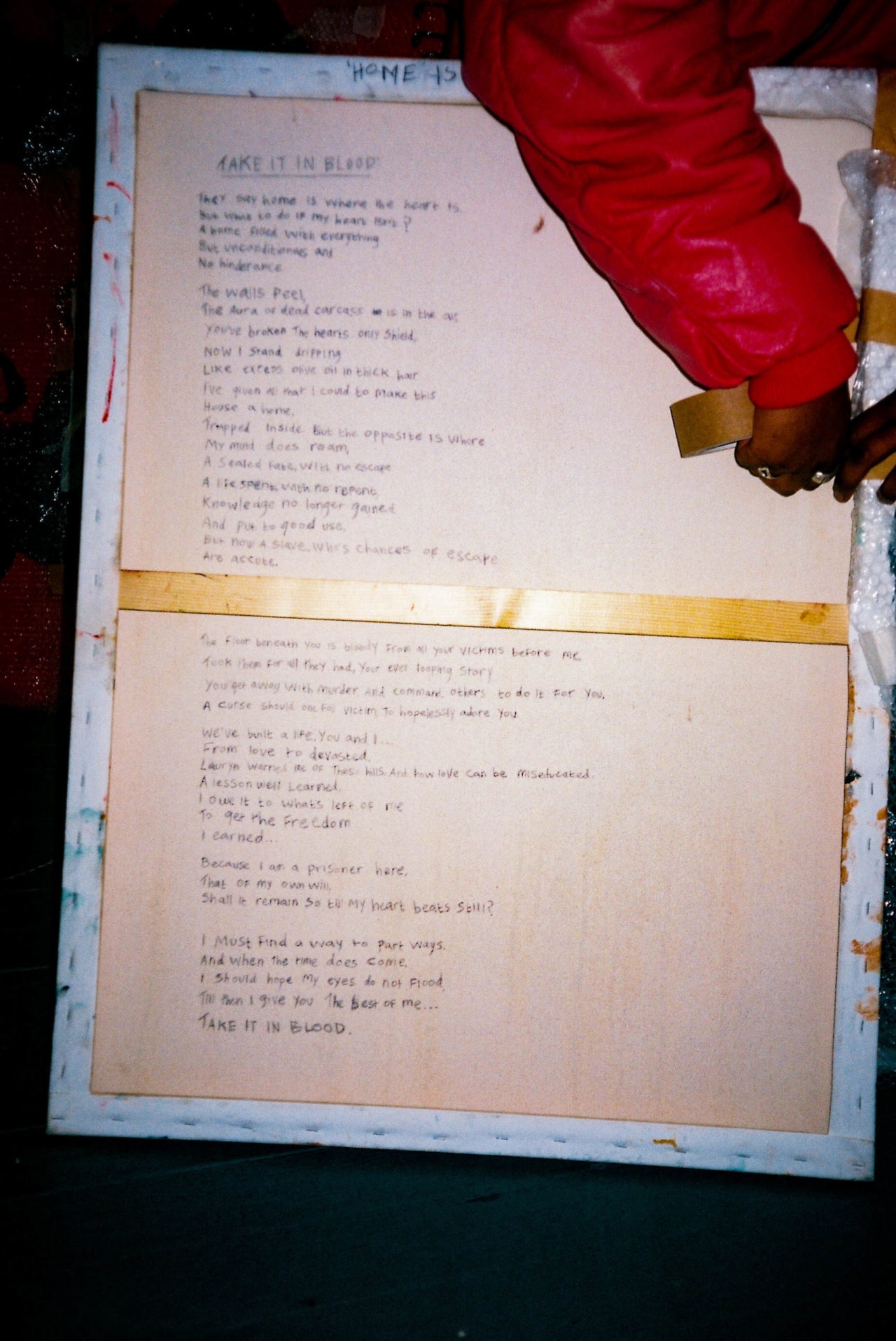
That is lovely. That is lovely. And for those who couldn’t make it down to the exhibition, what 3 words would you use to describe your artwork? Or your bones is what I call it.
I would say… unique, just because of all of my different inspirations and where they come from. I would say universal because although they’re seen through the eyes of a Black person, it wasn’t just Black people telling me that they felt my work. I would also say integral. So, unique, universal, and integral.
How would you summarise your pieces? I imagine they’re all inspired by different experiences that you’ve encountered in your life, but again for those who couldn’t make it down, how would you summarise this whole experience that is the Shaquille-Aaron Keith way of living thus far?
For the people who couldn’t make it down, I called the show ‘The Art of Storytelling’ because I’m very, very, very, very, very, very, VERY inspired by Hip-Hop, like I love Hip-Hop. I love Hip-Hop more than I love art, personally. But I love art to such a high degree. But you see, what I get from Nas or what I get from Mobb Deep isn’t the same thing I get from Edward Hopper, or Frida Kahlo. It’s very different… it’s raw but in a different sense. It’s like, when I listen to Hip-Hop, for some reason in my paintings I can just see how it’s supposed to look. Like, in my paintings I can see three verses, two choruses, a hook, and a bridge. I think those are the things that inspire me the most, so I guess I can’t describe my work because it’s very much its own thing, but I would definitely say I’m like a Hip-Hop artist… but not like one that gets into a recording studio if that makes sense.

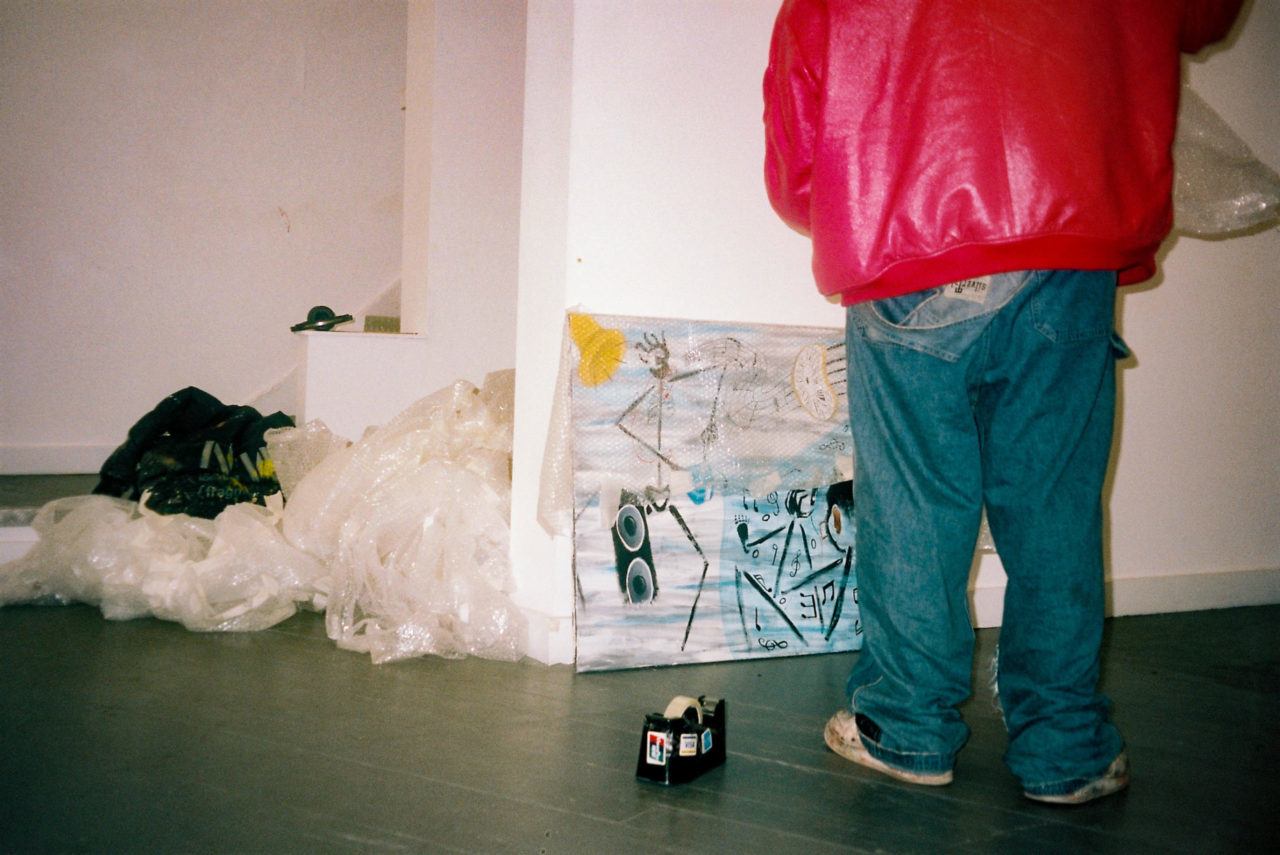
“The idea of selling work is a lot more glamourous than it is… it can hurt in ways you didn’t think it would. At the end of the day, people want to put a price on your life, and how much is your life worth?”
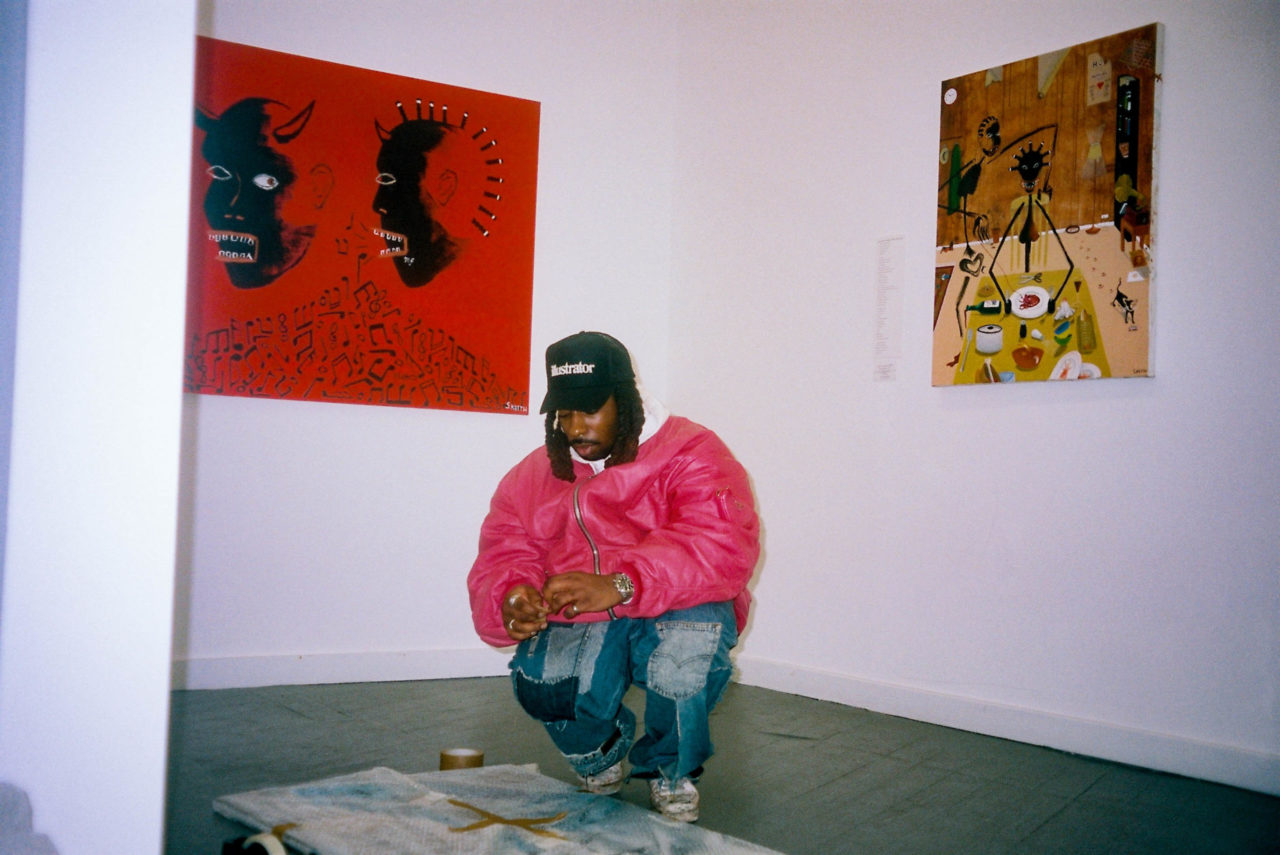
So, for you, your sixteen bars… what would you compare that to as an artist?
So, you know, the background of the painting is like the beat; it’s instrumental. The style that I’m painting in and the colours I choose to do, I guess that could be the melody and the mood. The lyrics come in when the story starts happening, so for example, when “Every Child’s First Sin”, the painting with the fishbowl and the cake and the Harry Potter book, I’m basically giving you a mad in-depth description of my childhood without saying anything. The torn down house and the brown colours, that’s the instrumental that I’m riding on, and then the hook and the bridge and all of that stuff, what people sing along to, is the KA can… it’s like “Ahh, I know that! I get KA!”. The hook and the bridge are the part of the song that everybody usually knows, and if they don’t remember the lyrics to the verses, they remember the hook and they remember the bridge. It’s the iconic little things that I throw in there, I mean they don’t even have to be iconic, maybe it’s just the way that I paint it in particular. I feel like that’s what ends up making the work so Hip-Hop to me in my head… it’s still fine art, but that’s just how I structure my work.
Wow. We spoke about it earlier and I guess you’re going to resonate with them all, but which piece to you is most poignant?
I’d probably say the communal portrait, also known as ‘Black Clouds’. It’s very simple but also very symbolic to a lot of people and a lot of people recognise the mental health aspect to it with all the different words. A lot of people recognise the Black suffering in it as well. I’m a deep thinker so, having one of these words flow through my head at one time is very, very, very unlikely. Usually, I actually am always thinking about taxes. I don’t manifest death, I manifest life, but naturally, I feel like any person that’s creative, especially a personal person… I actually saw this in a Francis Bacon interview and I feel like he’s correct for saying this, naturally as a creative person you think about your mortality, and it doesn’t have to be so black and white in thinking about it like “Oh, one day I’m going to die” … it’s more about your legacy and what you’re going to leave here. Sometimes I think about the nature of life, as opposed to the meaning, and how we have a different nature to life as opposed to animals where cats, dogs, and horses go their whole lives by communicating without having to grow a particular language, unlike us. One of my friends actually said this, he believes that language is used just to simplify our communication, but you look at animals, for example, they never grew that portion of the brain where they were able to do that; they can just communicate. Even stuff like that makes me think about the nature of human life where we feel like we’re so intelligent, but they always say that the smartest people can say the most with the fewest words… but how is it that animals can say a lot with none at all? Even stuff like that makes me think about life… on that kind of depth is what I think about so stuff like this (art) is just like the everyday. You know, you’ve got words in there like ‘history’, ‘loss’, ‘damage’, ‘tyranny’… even softer words like ‘blue’, ‘mistrust’, ‘tired’. These are everyday words, but then you’ve got other stuff like ‘woah’, you’ve got ‘injustice’, you’ve got ‘religion’, all of these other things. I feel like this one is more of a universal painting… that one is me at the moment, a lot of deep thoughts.
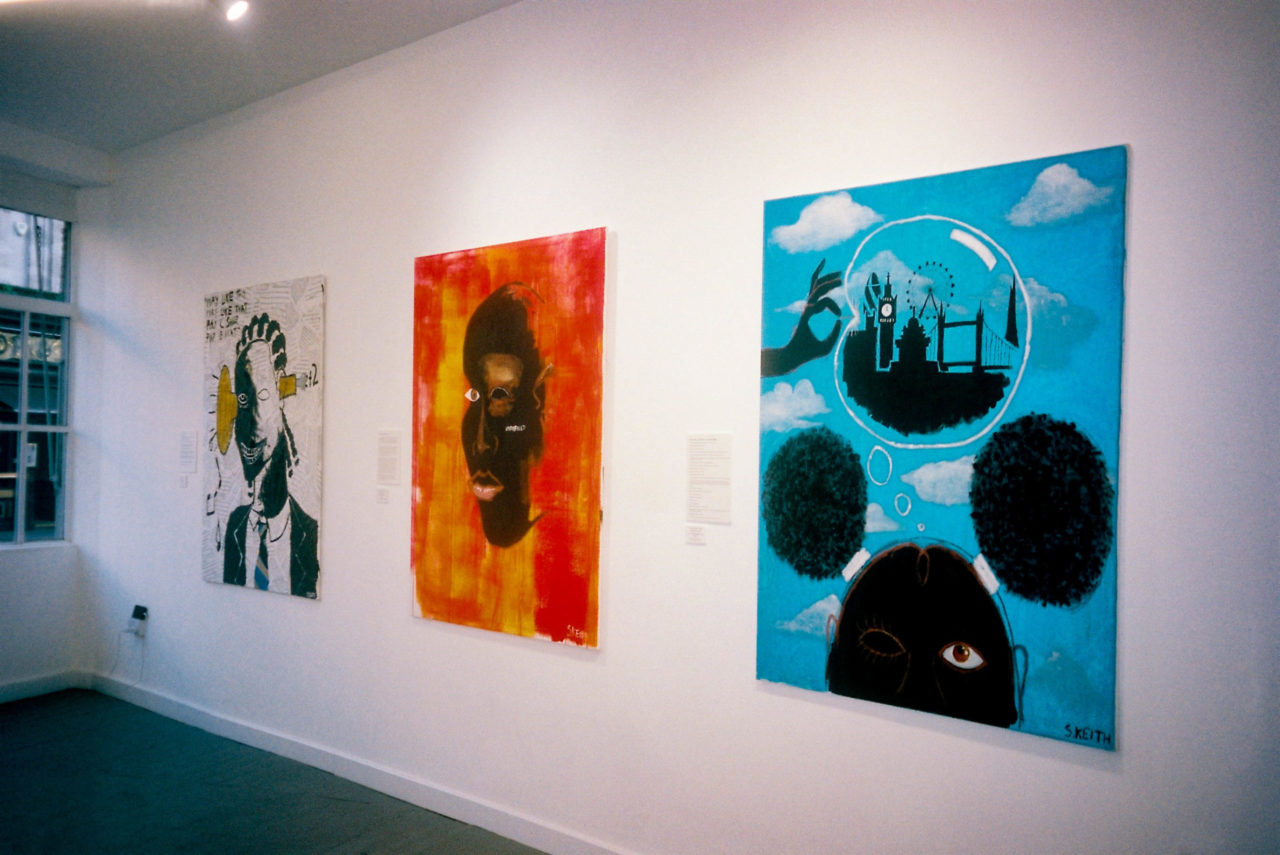

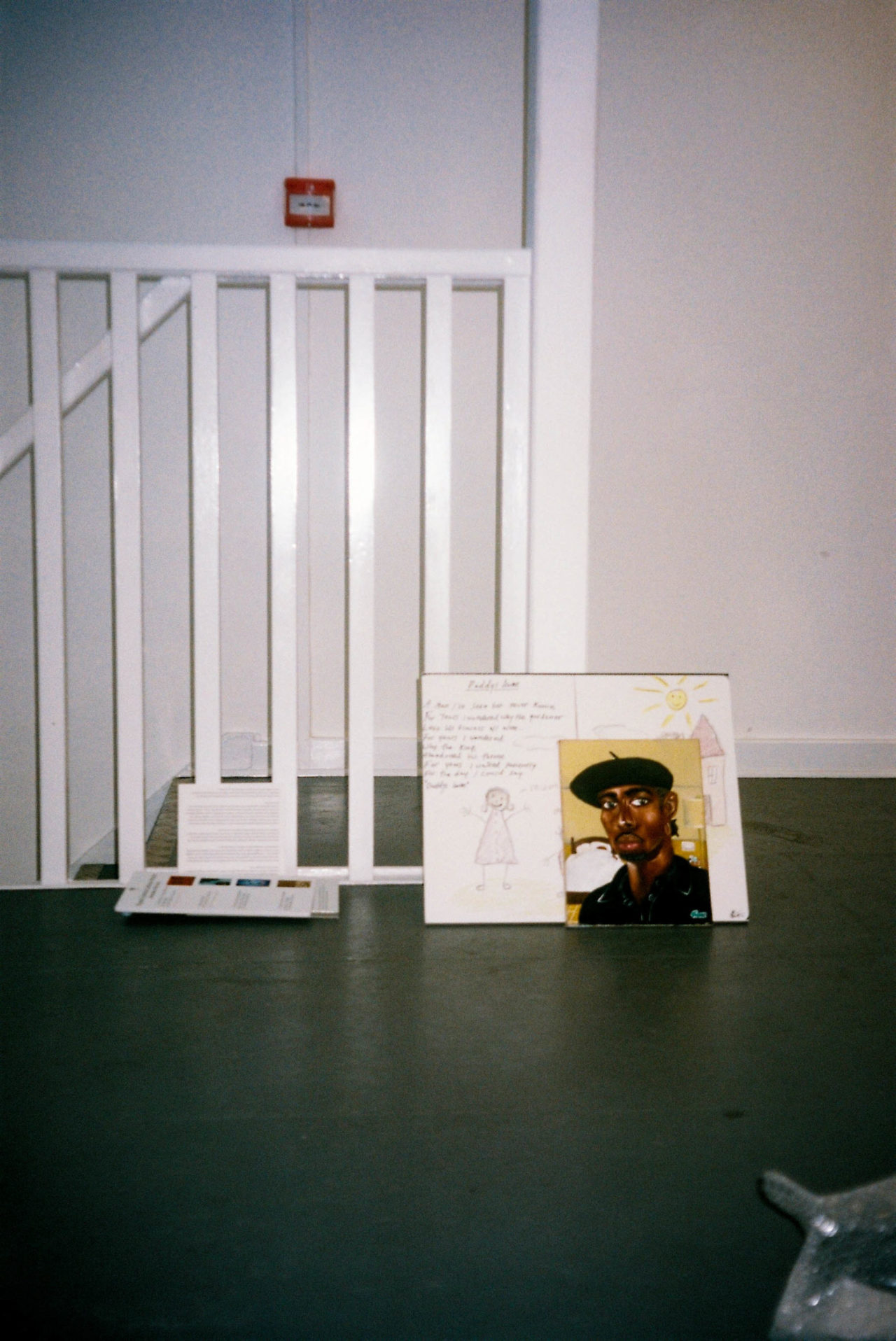
That’s a lovely way to end it. I was going to ask you quickly; I feel like you’re on this indie movement in the sense that you’re independent… is that something that you’re conscious of? Is it due to past experiences? Or is it just how you want to vibe and flow as a creative?
You know what it is about coming out of London, and this is some real sh*t, I don’t have a choice in that. When I reached out to the same people that some of my peers reached out to a lot of them… because of the hiccups I’ve faced along the way in my public career, whether it is from the show or not, I’ve chosen not to brown-nose certain people in certain industries. I don’t get as much as a response when I’m doing something, so certain publications, and certain people, mainly from London actually, don’t take much notice or have much of a care. So, it’s made me have a tough skin to want to move on my own. Ideally, I would like to work with my peers that I see in other avenues like fashion and art, but because I choose not to conform to brown-nosing or bigging up somebody that I don’t think is talented but is apparently popular amongst their peers, that means I’m an outsider. Do you know what? I embrace being the outsider and doing things uniquely and independently because when I look at people like Dave or Little Simz, I always see those people having their own movement going on and they’re two of the most successful artistic people coming out of London. So, if I can even get on the same route as them, then that means I’m doing way better thing than what the original plan was, to hopefully be amongst these other people in my peer group.
The indie thing is something I feel like God put me on, but at first, I was a bit more reluctant to embrace it, but now I embrace it wholeheartedly. I think I can demonstrate to people that we don’t need certain facets and certain people in our industry to help us chase our dreams; we can do it all on our own. I’m in South Kensington, not because of anyone from my peer group or my industry… I’m in South Kensington because God wielded it so I wanted to be here. That should be a testimony to anyone that is in this London bubble… it is probably better to be independent because you can get a lot more done, and you’ve got fewer people to say “I owe you” to as well.
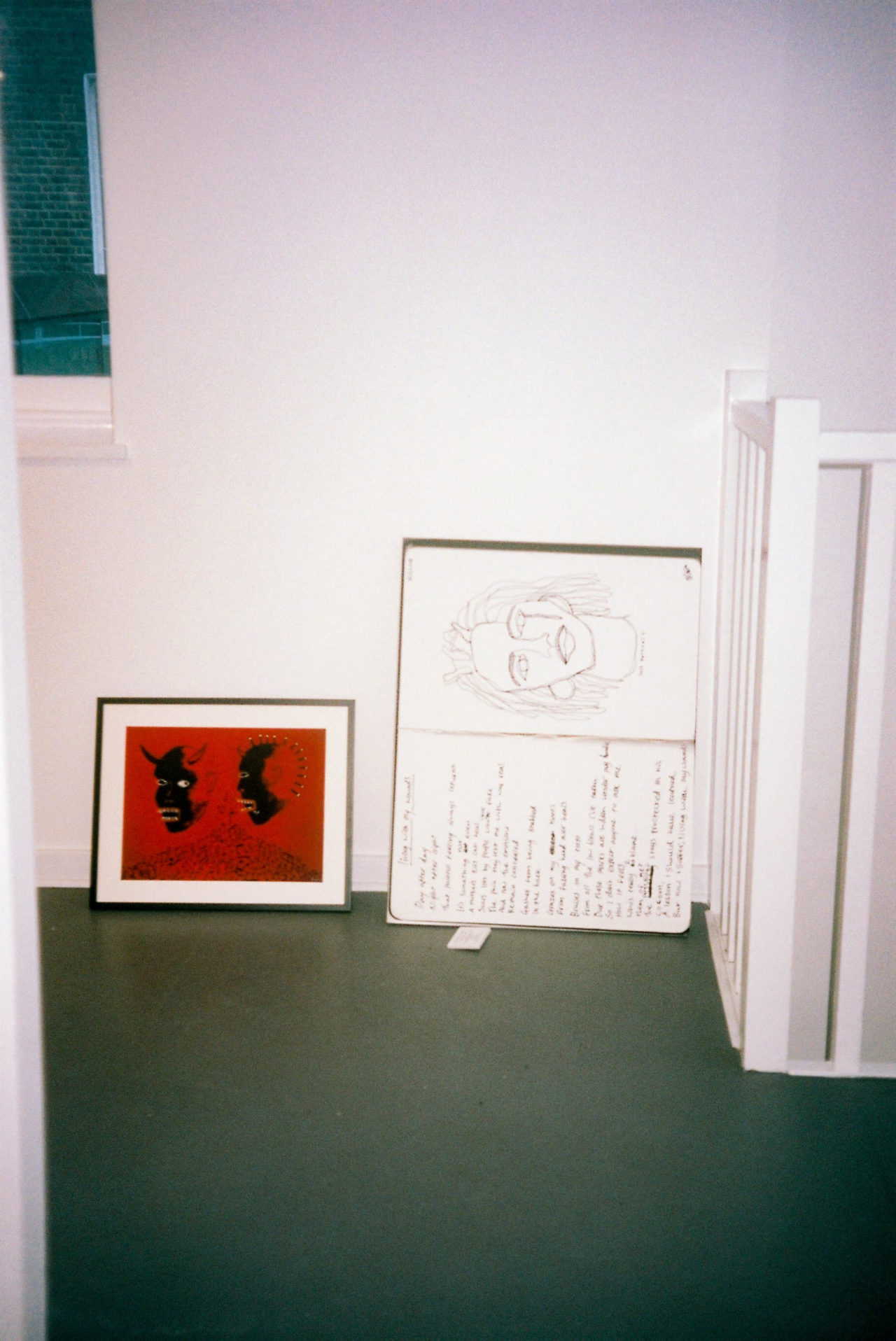
And just to end with, you mentioned that one of your pieces went for an amazing, amazing price. Is there anything you want to mention about that? Because I feel like that would be super inspirational.
So, this is the first time that I’m selling some work. I did an exhibition not wanting to sell anything… I was very adamant about that. But the private collector is a very well-established woman, an actress, and she really loved the work before the show came on and she bought three pieces. She bought ‘It’s Picture Day, I Can’t Hear You’, which is a very beautiful collage piece about my childhood and playing the trumpet at school. A collage with my old music notes, she bought that for 7.2… 7.2K. Had to make that clear! She bought the painting I did of my friend when she came and sat for me a couple of years ago, which was ‘A Study of a Fair Problem’. She bought that for £6,500. She also bought ‘Inherited Pain’ for £8,500. It’s just remarkable because I still can’t believe it, and I’d like to take this moment to give thanks all to God… alhamdulillah. I feel like without Him, I wouldn’t have been put in the right positions or met the right people for an opportunity like this to happen.
All in all, this is the first time I’ve ever sold artwork, so for it to go to someone like that who is from the art world itself, and is like “Okay cool, I’m willing to pay that price for this artwork”. Again, without that peer group that I was talking about, there are people in the world who will believe in you and will give you your price. I’m just a kid from Catford. It was also conflicting because I don’t believe you can put a price on your experiences, which is why the original amount it was going to be bought for was meant to be £5,000, but I couldn’t let two go and decided ultimately, I couldn’t sell any more from the collection because they’re too personal to me. I’d recommend to any artist, especially if you’re somebody that puts their heart into their work, what you need to consider is what you’re willing to let go of and what you’re not. The idea of selling work is a lot more glamourous than it is… it can hurt in ways you didn’t think it would. At the end of the day, people want to put a price on your life, and how much is your life worth?
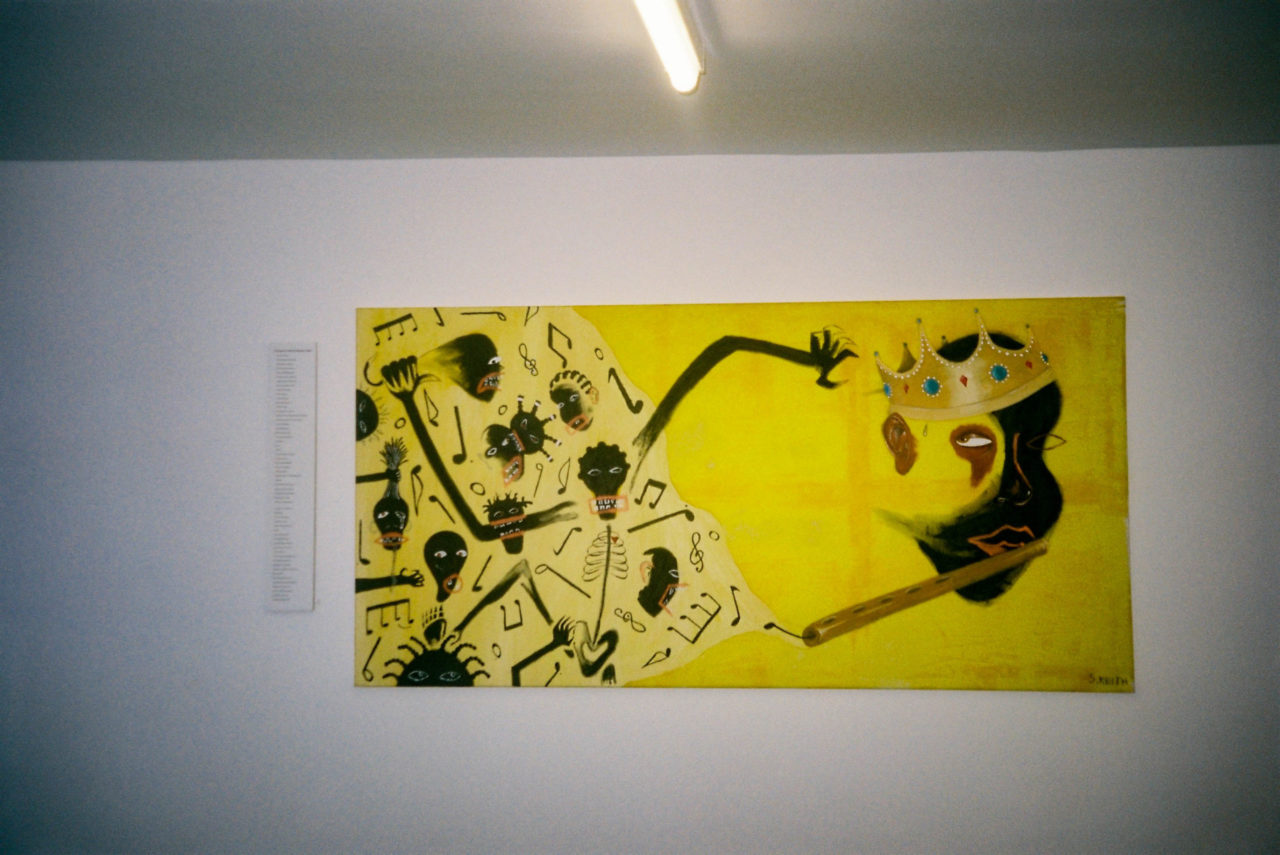
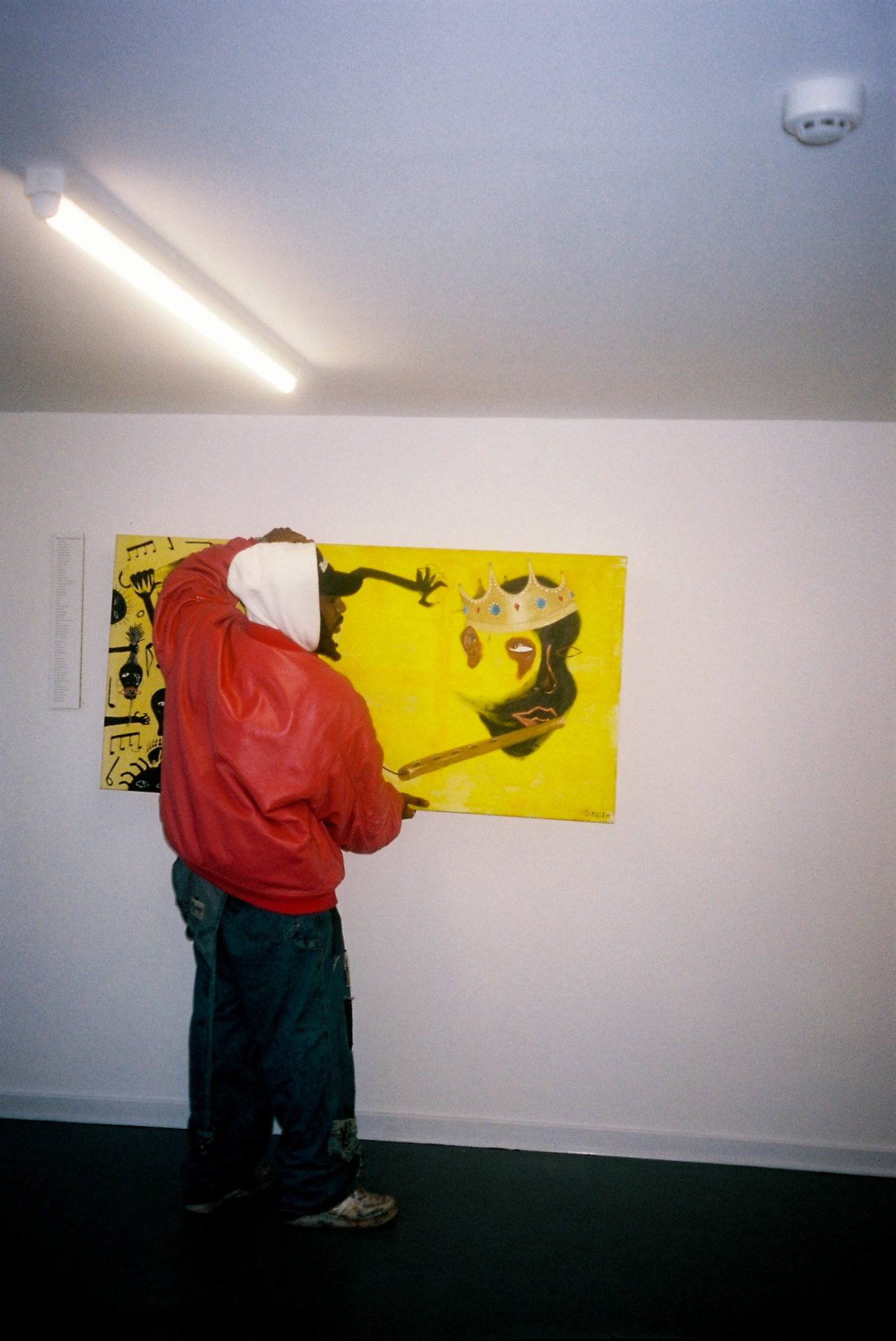
Follow Shaquille on Instagram



